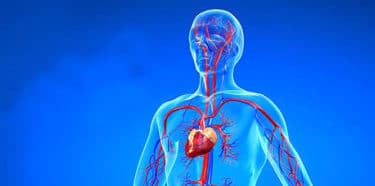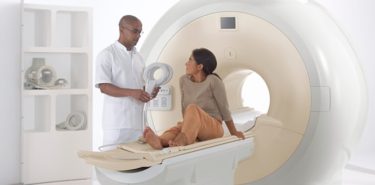Mammography is a very crucial diagnostic and imaging method for diagnosing breast cancer in women. Mammography images, called mammograms, are helpful for both diagnosis and screening. It plays a fundamental role in early detection of breast cancer together with regular clinical examinations and monthly self-examinations. Mammograms may also indicate other disorders and abnormalities in the breast. Experts recommend that women aged 40 and older should have regular screening every two years. In case of a personal or family history of breast cancer, it is advised to start screening earlier, have it more frequently, or use additional diagnostic methods.
Table of Contents
What is mammography?
Mammography is an imaging method using low-energy X-rays, particularly for imaging breast tissue. It plays a very important role in early detection of breast cancer. When there is no suspicion or symptom of cancer, mammography taken only for a check-up purpose is known as screening mammogram. (1) However, if a mass in the breast is diagnosed, if there are symptoms or breast implants, a diagnostic mammogram is required.
Diagnostic mammograms are more comprehensive than screening mammograms. More X-rays are given to capture images of the breast from multiple angles. Some areas of concern may also be enlarged. (2)
What is digital mammography?
Digital mammography uses the same x-ray technology as conventional mammograms, however solid state detectors are used instead of film to record x-rays passing through the breast. These detectors convert the x-rays into electronic signals, and then send them to the computer. The computer converts these electronic signals into images that can be viewed on a monitor and stored for use. (3)
Is digital mammography better?
- It makes the image clearer.
- Computer support is used to detect abnormalities.
- Digital files can easily be forwarded to other experts for a second opinion,
- It eliminates the possibility of renewal of the screening due to incorrect exposure techniques or problems during film development.
Although there is no difference in terms of patient’s experience at the time of screening, digital scanning may be a more proper choice for cancer screening in young or high-density breasted women. Most breast imaging centers have converted from film to digital mammography. (3)
Why mammography is done?
Types of mammography procedures: (4)
- Screening mammography: Looks for breast cancer in women with no symptoms.
- Diagnostic mammography: Required when the screening mammogram shows a suspicious area, a lump or pain is felt in the breast, cavitation on the skin, skin thickening, or other unusual symptoms such as discharge in the breast. It can be used to monitor breast tissue in special cases such as the presence of breast implants where screening mammography is difficult to perform. Diagnostic mammography lasts longer than screening mammography, but the total radiation dose is higher, because more X-ray images are taken for images from various angles of the breast.
- Surveillance mammography: is performed for checking up the recurrence in women with breast cancer.
- Needle localization and tumor marking: may be required to obtain tissue samples from breast masses that appear suspicious in screening or diagnostic mammography and to mark tumors during surgery.
How often should you get a mammogram?
Experts and health care centers have different views on when women should start regular mammography or how often tests should be repeated. However, the common view is that women aged 40 and older should have a mammography every year or every two years and once a year from the age of 54.
In case of a history of breast cancer in the family, screening should be started before the age of 40, mammography can be taken more frequently and additional diagnostic tools can be used. Women at high risk for breast cancer may be advised to have a breast MRI in addition to annual mammograms.
You can decide which screening plan is best for you after discussing with your doctor about your risk factors, preferences, and the benefits and risks of screening. (2)
Preparing for a mammogram
- Do not wear any deodorant, make-up, perfume or lotion on the day of the mammogram, and do not put any ointment or cream on the chest or armpits. These substances may affect the accuracy of images and may appear as calcification or calcium deposits.
- Inform your doctor if you have breast symptoms or problems, hormone use, family or personal history of breast cancer.
- If you are pregnant or breastfeeding, always inform the radiologist and doctor before scanning. The doctor may opt for other screening methods, such as ultrasound.
- Since breasts are more tender and swollen during menstruation, make sure to have mammography taken not before the menstrual period, but in the following week. To reduce the sensitivity in breasts, avoid caffeine use one week before the test or take an over-the-counter pain reliever on the test day.
- You may need to undress down to the waistline during mammography, so choose a two-pieced apparel on the day of the screening. Do not wear jewelry, wear comfortable large clothes.
- If any, bring copies of previous mammograms with you on the day of the screening.
What is the procedure for a mammogram?
- The patient stands in front of a special X-ray machine during mammography.
- If there is a history of breast surgery, the technician may place small marks on the wound site. This will show the radiologist where there is a high risk of recurrence.
- The radiologist places the breast on a transparent plastic plate. He/she adjusts the plate to fit the patient’s neck, and helps to position the head, arm and trunk for the best view of the chest.
- Another plate applies pressure for several seconds to spread the breast tissue by pressing firmly on the chest from above. The plates flatten the breast and hold it stable when taking an X-ray. This can be uncomfortable, but it helps to get a clear picture.
- To avoid blurred images, the patient is asked not to breathe for a few seconds while taking an X-ray.
- The radiologist goes behind a wall or to the next room to use the x-ray machine. X-ray captures black and white images of breasts displayed on the computer.
- Steps are repeated for a side view of the breast.
- Both breasts are x-rayed in the same way.
- Top and side views of each breast are taken in a standard mammogram. The doctor may want more scans from an area, which he suspects. (2)
Mammography results
How to read mammogram images?
- Calcium accumulation in canals and other tissues (calcification)
- Masses or lumps
- Asymmetric areas in the mammogram
- Dense areas seen only in a breast or in a specific area
- A recent dense area since the last mammogram
Calcifications can be caused by cell secretions, cell waste, inflammation or trauma. Small, irregular deposits called microcalcification may be related to cancer. Larger, thicker areas of calcification may be caused by aging or benign breast tumor fibroadenoma.
Most breast calcifications are benign, nevertheless if the calcifications seem to be irregular and proliferated, the radiologist may ask additional diagnostic images.
An abnormal looking mammogram does not always mean cancer. An additional mammogram, test or examination is needed for a definitive diagnosis. Additional tests may include additional mammograms, known as compression or magnification views, as well as a procedure (biopsy) to take a breast tissue sample for ultrasound imaging or laboratory testing.
The patient can be referred to a chest specialist or surgeon. These doctors are experts in diagnosing breast problems. They perform follow-up tests to diagnose breast cancer.
How long does mammogram results take?
The radiologist interprets the mammogram and sends the written report containing the results to the doctor and the patient within a few weeks. In case of doubt, the report may be given earlier.
How does breast cancer look on a mammogram?
Bones appear in white, soft tissue in gray and even black on the X-ray. In mammogram film, low-density tissues such as fat appear translucent (background becomes almost black, darker gray tones), whereas dense tissue areas such as connective and secretory tissue or tumors appear whiter.
Breast cancer and mammography
Although today mammography is the best screening method for breast cancer, it cannot detect all breast cancers. Some factors may prevent accurate results. For example:
- High breast density: Fibrous tissue areas surrounded by fatty tissue areas are called fibro-glandular tissue that gives shape to the breast. Fat tissue appears dark on mammography and fibro-glandular tissue appears white. Because fibro-glandular tissue and tumors have similar density, it may be difficult to detect tumors in women with high breast density.
- Having had breast surgery,
- Having had breast biopsy before,
- Family history of breast cancer
- Taking estrogen (menopause hormone treatment)
- Having undergone more than one mammogram are among risk factors.
- Breast implants: It is important to be aware of breast implants before mammography. An experienced technician or radiologist can take a mammogram by applying a special technique (called implant replacement imaging) to women with breast implants.
Some cancers detected by physical examination may not be visible on the mammogram. The cancer may be very small or may be found in an area that is difficult to see by mammography, such as the armpit. Mammograms may miss one out of 5 cancers.
In many difficult cases, additional imaging technologies such as ultrasound or magnetic resonance imaging (MRI) can be used to increase the sensitivity of the examination. Recent studies have shown that a nuclear medicine method called molecular breast imaging (MBI) may be an effective and cheaper alternative to MRI for patients with dense breasts.
Who do I see for a mammogram?
General surgeons or obstetricians may request mammography from their patients. However, it is recommended to consult a radiologist experienced in breast radiology for routine screening. It is the responsibility of the radiologist to perform, interpret, and supplement the mammography examination with good quality.
Risks of mammography
- Low dose radiation: Since mammography uses X-rays to produce images of the breast, a small dose of ionizing radiation is exposed. Because the dose is very low, the benefits of regular mammography outweigh the risks of radiation.
- Misdiagnosis: Some of the factors mentioned earlier may undermine the accuracy of the diagnosis, which may have different negative effects on the patient:
- False-positive mammogram (misdiagnosis of cancer): This can cause anxiety and other psychological distress in the patient. Additional tests to ensure that he/she does not have cancer can be costly, time consuming, and cause physical discomfort.
- False-negative mammogram (failure to detect cancer): This may lead to delays in the treatment. (5)




